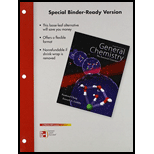
(1)
Interpretation:
The reaction which has greater activation energy has to be identified from the given diagram.
Concept introduction:
Arrhenius equation:
Arrhenius equation is a formula that represents the temperature dependence of
The Arrhenius equation can be represented as follows
R represents the universal gas constant and it has the value of 8.314 J/K.mol
T represents the absolute temperature
Slope in the graph of
(2)
Interpretation:
The plot which corresponds to the higher temperature has to be identified.
Concept introduction:
Rate of the reaction is the change in the concentration of reactant or a product with time. It can be varied in accordance with temperature, pressure, concentration, presence of catalyst, surface area…
Generally rate of the reaction increases with increasing temperature.
Order of a reaction: The sum of exponents of the concentrations in the rate law for the reaction is said to be order of a reaction.
Half-life is the time required for one half of a reactant to react.
For first order reaction
The slope of a plot of
Want to see the full answer?
Check out a sample textbook solution
Chapter 14 Solutions
Loose Leaf For General Chemistry With Connect Access Card
 ChemistryChemistryISBN:9781305957404Author:Steven S. Zumdahl, Susan A. Zumdahl, Donald J. DeCostePublisher:Cengage Learning
ChemistryChemistryISBN:9781305957404Author:Steven S. Zumdahl, Susan A. Zumdahl, Donald J. DeCostePublisher:Cengage Learning ChemistryChemistryISBN:9781259911156Author:Raymond Chang Dr., Jason Overby ProfessorPublisher:McGraw-Hill Education
ChemistryChemistryISBN:9781259911156Author:Raymond Chang Dr., Jason Overby ProfessorPublisher:McGraw-Hill Education Principles of Instrumental AnalysisChemistryISBN:9781305577213Author:Douglas A. Skoog, F. James Holler, Stanley R. CrouchPublisher:Cengage Learning
Principles of Instrumental AnalysisChemistryISBN:9781305577213Author:Douglas A. Skoog, F. James Holler, Stanley R. CrouchPublisher:Cengage Learning Organic ChemistryChemistryISBN:9780078021558Author:Janice Gorzynski Smith Dr.Publisher:McGraw-Hill Education
Organic ChemistryChemistryISBN:9780078021558Author:Janice Gorzynski Smith Dr.Publisher:McGraw-Hill Education Chemistry: Principles and ReactionsChemistryISBN:9781305079373Author:William L. Masterton, Cecile N. HurleyPublisher:Cengage Learning
Chemistry: Principles and ReactionsChemistryISBN:9781305079373Author:William L. Masterton, Cecile N. HurleyPublisher:Cengage Learning Elementary Principles of Chemical Processes, Bind...ChemistryISBN:9781118431221Author:Richard M. Felder, Ronald W. Rousseau, Lisa G. BullardPublisher:WILEY
Elementary Principles of Chemical Processes, Bind...ChemistryISBN:9781118431221Author:Richard M. Felder, Ronald W. Rousseau, Lisa G. BullardPublisher:WILEY





